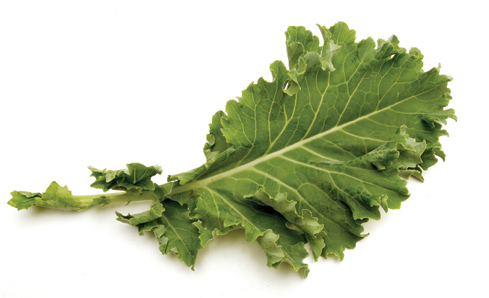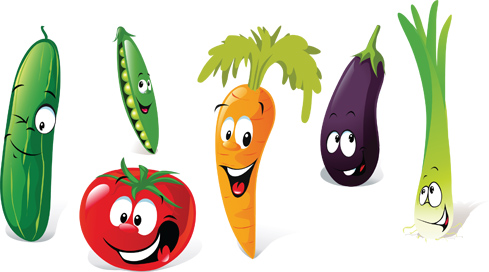 Summer 2012
Summer 2012|
"Raise your hand if you like fruits and vegetables!"
- Amanda Iwaniec, espousing the merits of Kale and other colorful foods in Kitchen Theater |
Taste The Rainbow
Carnegie Science Center mixes up a healthy new Kitchen Theater show that introduces its visitors to a tasty—and increasingly cool—super vegetable.
Behold the kale chip. Yes, kale, as in that member of the cabbage family many Americans would be hard pressed to identify. And chip, as in a healthy, inexpensive alternative to the standard potato chip. The process of turning cabbage into chips is practically child's play, which is exactly the point of the latest production of Carnegie Science Center's Kitchen Theater, Taste the Rainbow. As the demonstration theater's education coordinator, Amanda Iwaniec has worked on her share of Science Center mainstays. For example, there's the true story of what happens when combustion meets caramel in Fruit Flambé, the adventures of carbon dioxide in Plant Pop!, and the classic tale of liquid nitrogen falling head over spoon in Science in a Scoop. These shows all end happily ever after with the audience enjoying a sweet snack. But while flambé, soda pop, and ice cream may make science more palatable for kids and adults alike, they hardly promote healthy eating. With 30,000 people enjoying Kitchen Theater shows each year, Iwaniec wanted to offer a nutritious change of pace. She was looking to write a new script, one that would give vegetables and fruits the opportunity to take center stage. So she turned to her trusty intern, University of Pittsburgh dietetics and nutrition student Kayla Florian, and asked for suggestions. "I remembered Kitchen Theater from when I was kid," the 22-year-old recalls. Now armed with a behind-the-scenes perspective, she knew the show needed to be practical, educational, and fun. She had an idea.
"What about kale?" Florian offered. After all, kale chips have achieved cult status in the culinary world and Florian herself has been known to make batches of maple chipotle kale chips for friends and family. "Brilliant!" Iwaniec declared. "Most people don't know the greatness of kale." She's right. Kale is a super vegetable. It's low in calories, high in fiber, and an amazing source of calcium and vitamins A, C, and K. And it's cheap. An entire pound of kale costs less than $1.Taste the Rainbow was born and then raised with pre-kindergarteners and kindergarteners in mind. "Early learners are so curious," Iwaniec explains. "They pay attention and absorb everything. They really are excited about learning." That's certainly evident as a group of red-shirted preschoolers arrives for a school field trip. Sporting her official-looking red lab coat, Iwaniec greets the kids at the door and then leads them on a mini-parade to the very front of the room. The 4- and 5-year-olds sit crossed-legged on the floor while parents and teachers occupy the stools that help give the theater its 1950s-style diner vibe. "Raise your hand if you like fruits and vegetables!" Iwaniec encourages. Arms wave in the air and soon kids are calling out their favorite orange (carrots!), red (apples!), yellow (bananas) and green (broccoli!?) edible colors of the rainbow. Shortly after blueberries, it's time for the "Circle of Plant Life" dance. Both adults and kids reach higher and higher with their outstretched bodies, mimicking vegetables as they grow from seeds to roots, to stems, to leaves, to flowers, to fruit, and then repeat. Noah and Lauren are recruited from the audience to help prepare the pièce de résistance—the kale chips—but first they demonstrate, with a bit of coaching from Iwaniec, the proper way to wash their hands. Next, they get to work separating the leafy parts of the kale from their stems, cleaning the little shrubs and then gently seasoning them with oil, basil, and oregano. Iwaniec takes it from there, placing the kale on a cookie sheet and right into the oven where it bakes for eight minutes on both sides at 350 degrees. (By the way, the stems are not discarded but rather served to the Science Center's Mali uromastyx (aka lizards); eastern box turtles; and Madagascar hissing cockroaches that call the fourth floor home.) Thanks to the magic of planning ahead, the chips are ready to eat in no time at all. The first thing most people notice is how very green they are—and, perhaps more surprisingly, how crunchy and flavorful. When presented to the class, the kale chips are met with trepidation; and that response comes from the grownups who, despite their instincts to decline a taste test, are trying their best to set a good example. The kids, however, are game. They excitedly await their turn to take hold of a plastic cup containing a single kale chip. Most begin by cautiously nibbling at the edges. A few quickly make that oh-no! face, while the rest finish their chips and declare the treat "not too bad." High praise indeed.
|
First Impressions · GUITAR · Manufacturing Ideas · Growing Up a Science Rock Star · Special Section: A Tribute to Our Donors · Director's Note · NewsWorthy · Face Time: Russ Christoforetti · Artistic License: The Power of the Painter · Field Trip: Appalachian Wonder · The Big Picture
 |
Copyright © 2017 CARNEGIE Magazine. All rights reserved. |


